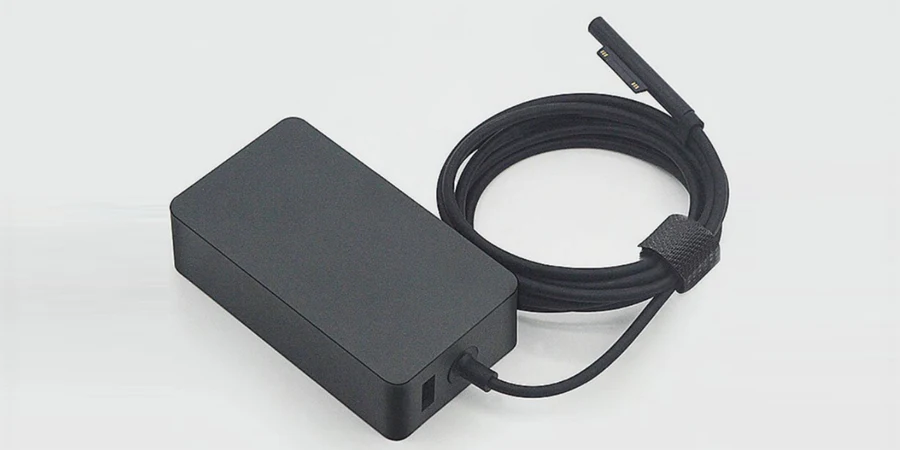Monitor stands are amazing accessories! They give users complete control over the monitor’s placement, viewing angle, and height. These stands are sturdy enough to withstand the monitor’s weight, so consumers can rest assured that there won’t be any accidental falls.
Nevertheless, various monitor stands are available today, each offering varying designs, height adjustment ranges, and number of monitor support. But there is no need to stress over the large variety!
This article will reveal five amazing monitor stand trends to businesses so they know the best ones to leverage in 2024.
Table of Contents
What are the benefits of monitor stands?
Overview of the global monitor stand market
Monitor stands: 5 popular types to stock
Helpful tips before jumping into the monitor stand market
Final words
What are the benefits of monitor stands?

Customized working posture
Consumers perform different tasks with their monitors, which may require different sitting positions. For instance, reading may require leaning back, while writing may involve leaning in—and a standard position may not suit these activities.
With monitor stands, consumers can adjust their screen to their eye level effortlessly, maintaining an ergonomic distance for any task.
Solve computer eye strain
Computer eye strain, also known as digital eye strain or computer vision syndrome, is a common issue for those who spend extended periods on computers. Unsurprisingly, prolonged screen exposure can lead to eye fatigue, dryness, and blurred vision.
However, using monitor stands addresses these concerns by allowing consumers to adjust their monitors for the most comfortable viewing height, angle, distance, and position.
Create a clutter-free working environment
Monitor stands offer a space-efficient solution by attaching to the back of the desk, the wall, or the ceiling, creating a clutter-free zone under the elevated monitor.
Some monitor stand models also have compartments and drawers for added convenience. They may also feature cable management systems to increase the workspace’s minimalist appeal.
Overview of the global monitor stand market

The global monitor stand market, valued at US $1.46 billion in 2022, is expected to grow at a 3.2% compound annual growth rate (CAGR) from 2023 to 2030. These accessories are gaining popularity due to the focus on employee comfort and productivity.
Other key drivers include the increasing number of small businesses and internet users and the rising demand for display monitors and computers. The gaming sector also contributes to market growth due to the availability of specialized pro gaming monitor arms.
In terms of application, the office segment dominated the market, driven by features like single-screen and multiscreen monitor stands. The healthcare segment will also register the fastest growth over the forecast period.
Regionally, North America holds the largest market share (40.4%) in 2022 due to the large presence of private and corporate offices.
Monitor stands: 5 popular types to stock

1. Mechanical (spring) monitor arms
Named for their mechanical design, these monitor stands feature a system of coil springs. Due to the simplicity of this mechanism, mechanical monitor arms operate efficiently over an extended lifespan, typically lasting 8 to 10 years.
However, the trade-off is a less smooth operation and some noise during adjustments. Additionally, they exert a substantial release force, potentially requiring more physical strength to adjust and maintain the desired position.
Nevertheless, spring monitor arms offer various benefits, counteracting their downsides. One of such advantages is their ability to effortlessly support monitors weighing up to 15 kg, ensuring glitch-free performance.
2. Hydraulic (gas) monitor arms
Hydraulic arms represent an advanced category of monitor stands featuring a gas spring mechanism, allowing for exceptionally smooth and precise arm movement. Consequently, these monitor arms make adjusting monitors to the desired position effortlessly easy.
Moreover, these arms provide unparalleled flexibility, offering an impressive range of movement from a 180-degree swivel to swift transitions between portrait and landscape orientations.
The hydraulic mechanism also ensures silent operation. In contrast to mechanical arms, hydraulic variants provide a perfectly counterbalanced presentation, catering to users with lower physical strength (like young students, older people, and individuals with disabilities).
Additionally, extended usage or gradual gas leaks can result in these arms needing annual maintenance. Consequently, their lifespan may not exceed five years, impacting their cost-effectiveness in the long run.
3. Single monitor mounts
Single monitor mounts do exactly what their name implies: suspend only one screen with a single height-adjustable arm. They may not be multi-functional, but their design instantly creates more space for effortlessly positioning the user’s screen while allowing full-range motion.
More importantly, single monitor stands can boost efficiency, convenience, and comfort, making them perfect for office or house settings. Most are also VESA-compatible, meaning they can accommodate a wide range of monitors.
4. Dual monitor mounts

Unlike their single cousins, dual monitor mounts offer double height-adjustable arms. Their designs can easily accommodate up to two screens, allowing users to use them with a wide range of motion.
Interestingly, the dual monitor mount is also the perfect way to increase efficiency and save space. Consumers can also enjoy ergonomic viewing while using comfortable body postures—no need to stress when using two monitors!
5. Wall monitor mounts
If consumers search for the sleekest design, these stands will catch their fancy. Wall monitor mounts are the perfect solution for users who appreciate working on an aesthetically pleasing and uncluttered surface.
But it’s worth noting that these monitor mounts are more ergonomically restricted, making them less suitable for office settings. For instance, the most basic and budget-friendly option involves mounting monitors in any fixed position without tilting or panning capabilities.
Conversely, more sophisticated types offer increased tilting and panning and the flexibility to switch between landscape and portrait modes. But they’re generally more expensive.
Helpful tips before jumping into the monitor stand market

Freestanding vs. desk mounting method
Monitor stands come in two main configurations: freestanding units atop the work surface and those directly mounted to the desk.
For desk-mounted stands, retailers can also choose between two options: a clamp or grommet mount. The clamp securely fastens to the worksurface’s outer edge, while the grommet mount affixes through a hole on the desk, ensuring stable and convenient installation.
Monitor size and weight requirements
Understanding the weight and dimensions of the target consumer’s monitors is crucial. Every mount or stand has specific weight and size limitations to avoid instability or potential damage to the mounting systems or monitors.
So before purchasing, ensure that the target monitors align with the size and weight specifications outlined for the mount.
Adjustability options and features

Monitor mounts have two primary options for adjustability. For this reason, businesses can opt for a fixed mount or one that offers height adjustability, depending on target consumer preferences.
Some mounts also enable users to swivel or tilt their monitors, while others come with articulating arms, extending the distance from the mount to the screen.
Final words
Consumers are always searching for ways to keep their desk space clutter-free. From CPU holders to mouse bungees, screens also get the suspended treatment with monitor stands.
These stands are popular (246,000 searches in December 2023 based on Google Ads), and for good reason. They offer fantastic benefits that make them an attractive consumer purchase and a high-profit investment for retailers.
Choose between hydraulic, mechanical, single-monitor, dual-monitor, and wall-mount monitor stand trends to enter the market with a bang in 2024.








